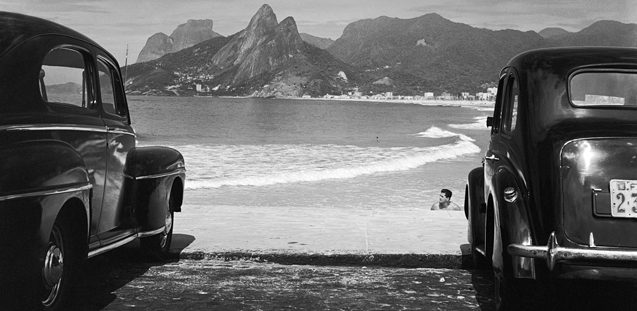PHOTO:Modernités-Photographie brésilienne (1940–64)
 At the beginning of the 1940s, during the 2nd World War, Brazil was a destination for thousands of emigrants. The country went through a unique modernisation process affecting all sectors of Brazilian society. The exhibition entitled “Modernités. Photographie brésilienne (1940–64)” aims to demonstrate how contemporaneity does not emerge from a void but is built via continuities and ruptures.
At the beginning of the 1940s, during the 2nd World War, Brazil was a destination for thousands of emigrants. The country went through a unique modernisation process affecting all sectors of Brazilian society. The exhibition entitled “Modernités. Photographie brésilienne (1940–64)” aims to demonstrate how contemporaneity does not emerge from a void but is built via continuities and ruptures.
By Dimitris Lempesis
Photo: Fondation Calouste Gulbenkian Archive
The exhibition allows the perception of a moment in history of Brazil: the untouched Amazonia and the Indian tribes, the beaches and daily life in Rio de Janeiro as well as the carnival, the African religions and their initiation rituals, the industries, factories and the baroque churches, the buildings od Brasília, the new capital. These wide-ranging themes sketch a portrait of Brazil during a particular era that ended with the beginning of the military dictatorship in 1/4/64. The exhibition explores this extraordinary transformation through the eyes of four photographers with very different styles and sensibilities. Marcel Gautherot, a Parisian who greatly admired Le Corbusier and Mies van der Rohe’s work, he had access to Brasília as early as 1958, thanks to his friendship with Oscar Niemeyer. Hans Gunter Flieg, who fled nazism as a German Jew and came to Brazil in 1939 where he specialised in photographing industries. Thomas Farkas, a Hungarian who’s family emigrated to Brazil in 1930, is probably the most well-known and the most avant-garde of this group since he was interested in photography as a work of art from a very young age and was one of the most important amembers of Foto Cine Clube Bandeirante, finally, José Medeiros, a photojournalist who was born in Piauí, a poor state with very little cultural tradition, had learnt photography by working with the Carioca newspapers. He was attentive to the changes and ruptures in all the social classes. Through the lens of these four artists whose practices and origins were so diverse, we can also anticipate notions of alterity and cosmopolitism that define our world today.
Info: “Modernités. Photographie brésilienne (1940–64)”, Curating: Antonio Pinto Ribeiro, Ludger Derenthal & Samuel Titan Jr, Fondation Calouste Gulbenkian, 39 bd de la Tour-Maubourg, Paris, Duration: 6/6-26/7/15, Days & Hours: Tue-Fri: 9:00-18:00, Sat-Sun: 11:00-18:00, www.gulbenkian-paris.org




